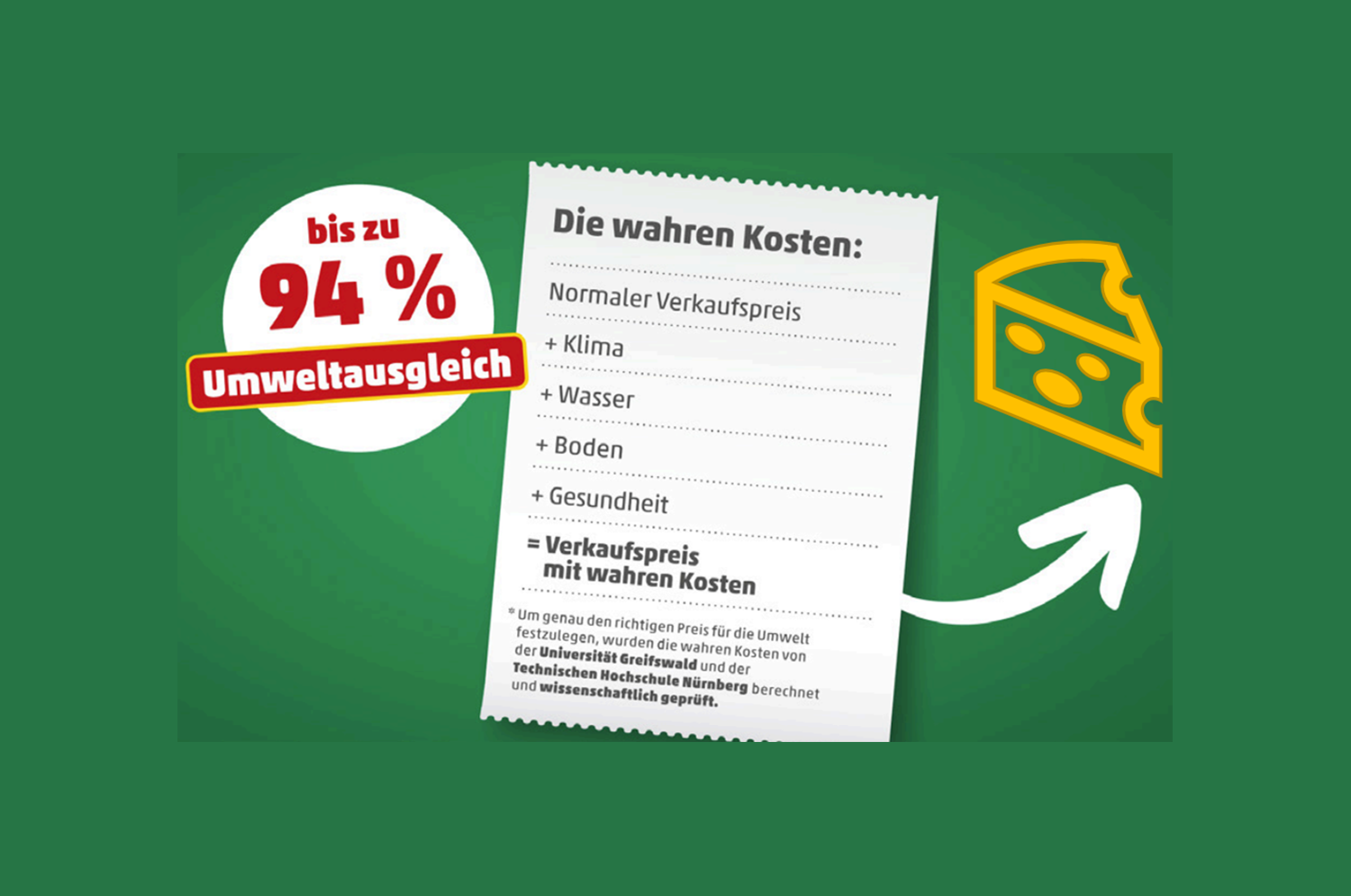Every kind of production and consumption affects the environment. These currently invisible environmental follow-up costs – so-called true costs – are unavoidably incurred along supply chains, but are not or only partially reflected in the sales price of the products, services and food. There is currently no transparent information on whether and how they are compensated.
The scientists have calculated the economic impact on the factors ground, climate, water and health incurred along the supply chain and added them to the sales price of selected conventional and organic products, as well as one vegan product, sold by PENNY. The calculations by the team around Prof. Dr. Tobias Gaugler from the Faculty of Business Administration at Nuremberg Tech and Dr. Amelie Michalke from the University of Greifswald’s Institute of Geography and Geology showed that the extra costs varied depending on the product category. For example, the organic foods that were part of the study generally had lower follow-up costs than their conventionally produced counterparts, the plant-based substitute had the lowest additional costs by far.
In contrast to current costs of food, the true costs of food also reflect the environmental and social follow-up costs incurred along the supply chain. These follow-up costs are also referred to as “negative externalities”. They are caused by all food producers, but currently borne by society as a whole. This means that consumers bear these costs indirectly, for example for the effects of climate change due to emissions of greenhouse gases, or they pay for the treatment of drinking water contaminated by fertilisers in their water bill.
True cost accounting not only calculates the direct production costs in the price of food, but also converts its impact on ecological or social systems into monetary units. By using these scientific methods to balance the prices of food in true cost accounting, the consumer can see the actual price of their food, helping them to understand which products have a long-term effect on the health of the planet.
The true price of the products in this campaign were calculated using life cycle assessment (also known as life cycle analysis). This method first calculates the amounts of pollutants, emissions and resources accrued during the products’ production cycle. After this amount has been determined, it is offset with the corresponding damage cost factors. These damage cost factors describe the financial damage to society caused by the respective emission or the consumption of certain resources.
Prof. Dr. Tobias Gaugler explains: “During this campaign week, we will receive extensive data and sociodemographic information. These can deliver valuable insights into the consumer behaviour and acceptance of the topic. In turn, recommendations can be derived for the various players, in particular, in order to develop sensible political measures that contribute towards a sustainable transformation of the food sector.”
Dr. Amelie Michalke adds: “Our aim is not to introduce the true costs for all food. This would require extensive fundamental scientific data that is currently unavailable as well as answers to key questions of social fairness. However, we hope to gain a strong impulse that will lead the entire society to discuss and consider food prices in a different and more cost-causative way.”
PENNY will donate all additional income of the one-week campaign – i.e. the difference between the sales price and the true cost price – to the “Zukunftsbauer”, a community project with a dairy, farmers and customers that has set itself the goal of contributing towards climate protection and preserving family-run farms in the Alpine region.
The scientists think that if the exemplary campaign that recently took place were to be extended, the additional income could be invested in projects to support a sustainable transformation of agricultural systems. It would also be possible to use such campaigns to motivate consumers to sustainable consumption. Further findings could also be used to investigate how sensible it would be to adjust the VAT rates to foster more sustainability in shopping.
The scientific aspect of the True Cost Campaign was developed by members of two research projects HoMaBiLe [de] (with the practice partner Tollwood, funded by BMBF) and FOODCoST (funded by the EU’s Horizon Europe).
Further information
To the press material
www.homabile.de [de]
Please address any press enquiries to infowahre-preisede
Contacts at the University of Greifswald
Prof. Dr. Susanne Stoll-Kleemann
Institute of Geography and Geology
Chair of Sustainability Science and Applied Geography
infowahre-preisede
Dr. Amelie Michalke
infowahre-preisede
X: @homabile
LinkedIn: www.linkedin.com/in/amelie-michalke-119bb41a1
ResearchGate: https://www.researchgate.net/profile/Amelie-Michalke
Contact at the Nuremberg Institute of Technology
Press Officer: Matthias Wiedmann
presseth-nuernbergde
https://www.th-nuernberg.de/en

